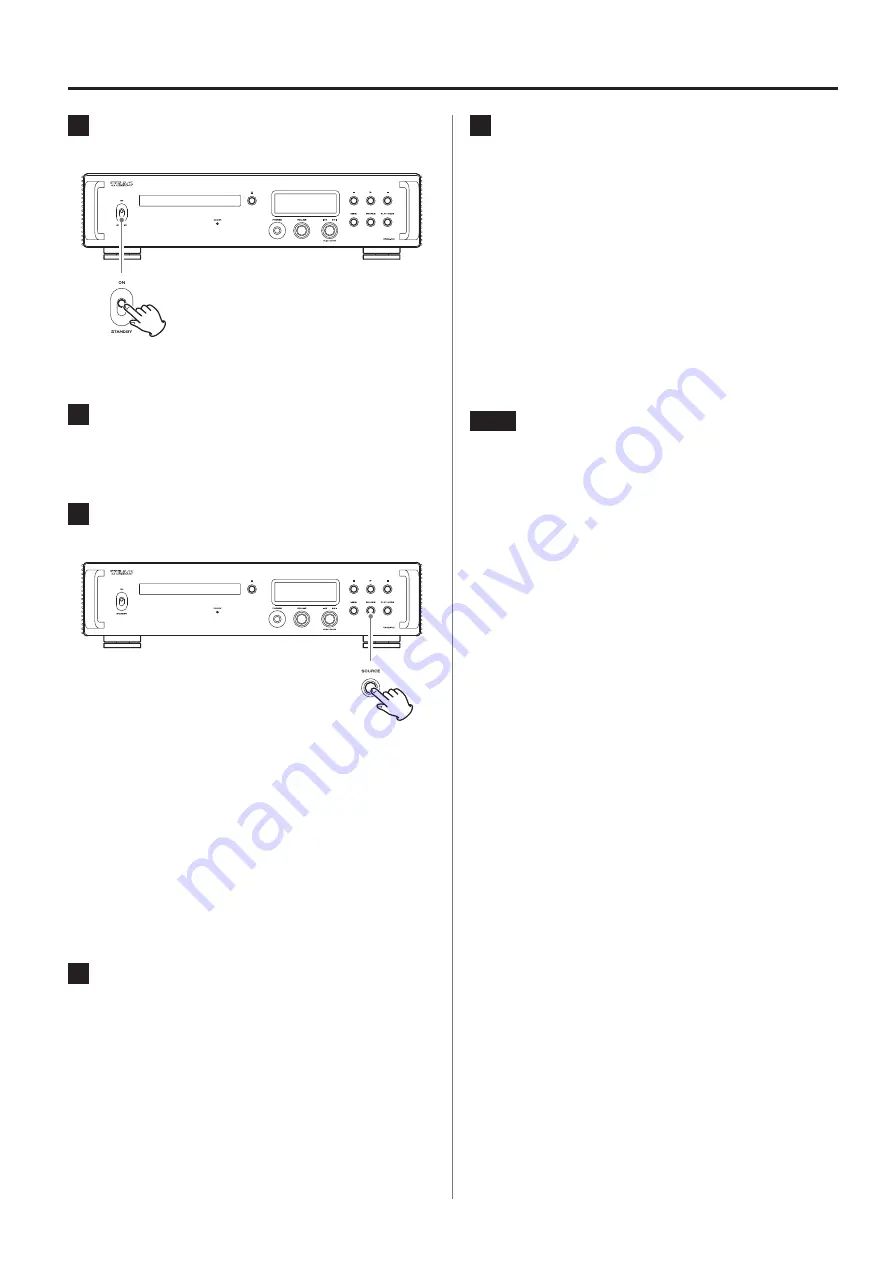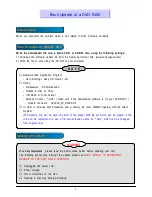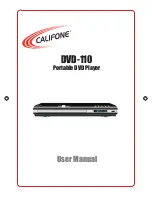
18
Basic operation
1
Shift the STANDBY/ON switch to its ON posi-
tion to turn the unit on.
o
If a stereo amplifier is connected to this unit, always turn the
amplifier on very last.
2
Minimize the volume.
Minimize the volume on devices used to control the volume
(this unit, the stereo amplifier or other equipment connected
to this unit).
3
Press the SOURCE button to select the input
source.
The selected source appears on the display.
o
You can also use the SOURCE button on the remote control.
o
If the input signal is not a digital audio signal or is an audio
signal format that is not supported by this unit, such as
Dolby Digital or DTS, no audio will be output. Set the digital
output of the connected device to PCM audio output.
o
To play back audio files when this unit is set to USB, you
must first install a dedicated driver on the computer before
connecting them (page 30).
o
DSD data can only be played back when the input source is
USB or when using DoP format digital input.
4
Operate the playback device.
Refer to the operation manual of that device.
5
Adjust the volume.
When using the analog audio outputs
When LINE OUT LEVEL is set to VARIABLE, turn this unit’s
VOLUME knob to adjust the volume.
When LINE OUT LEVEL is set to any other setting, the volume
cannot be adjusted from this unit. Use the stereo amplifier or
other device connected to this unit to adjust the volume.
When headphones are connected to this unit
Turn this unit’s VOLUME knob to adjust the volume.
o
When this unit’s VOLUME knob is enabled, the volume setting
will be shown.
NOTE
o
The automatic power saving function is set to ON when shipped
new from the factory (page 27).
o
When DIMMER (display brightness) is set to AUTO OFF, the display
will turn off when not being operated (page 26).
















































